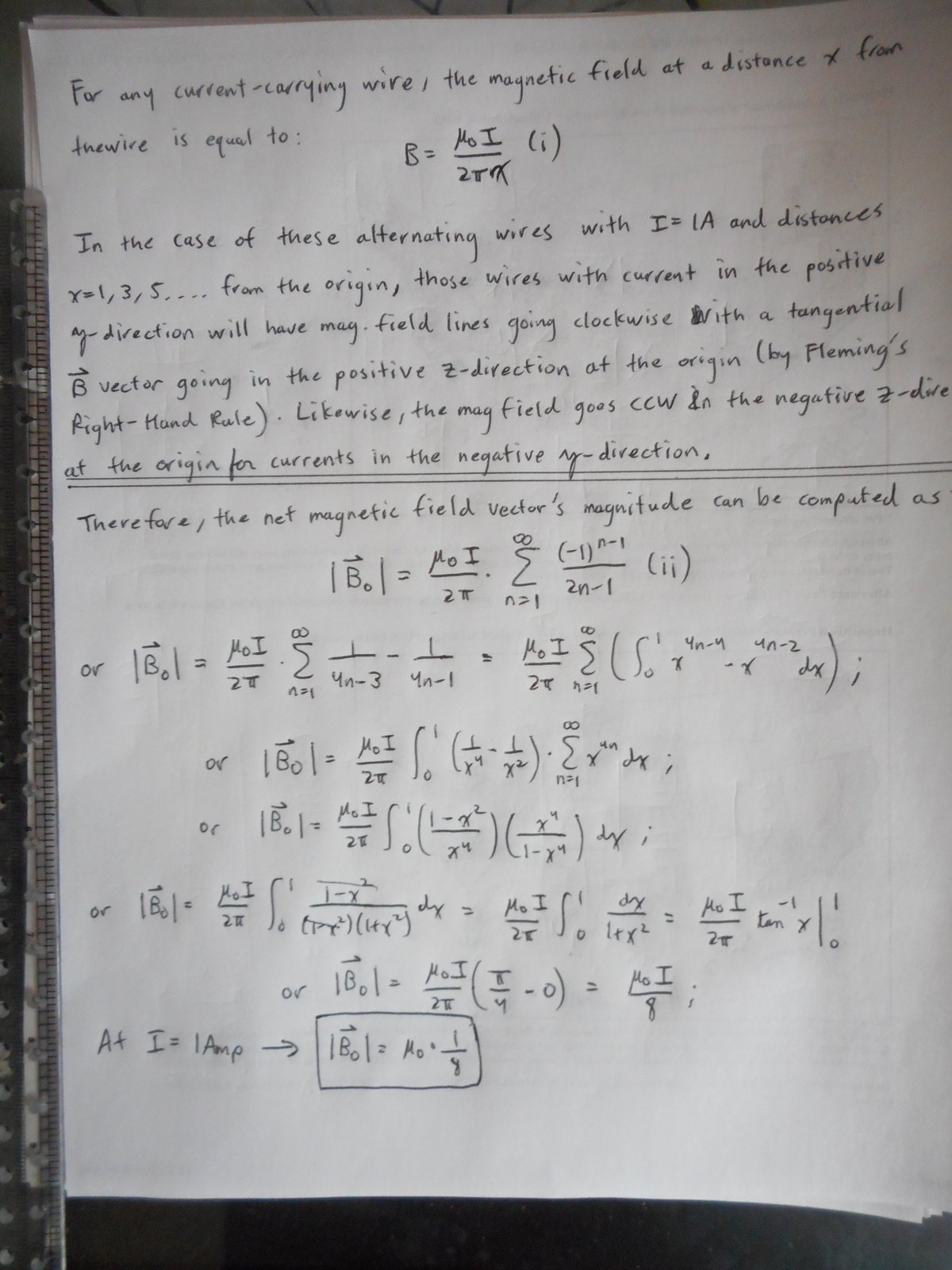JEE Physics 4
Equal currents of magnitude 1 ampere are flowing through infinitely long wires parallel to y -axis located at x = 1 , 3 , 5 , … . The direction of the currents are alternative (the first one at x = 1 being positive) . Find the magnetic field at the origin .
If your answer can be represented in the form of μ 0 A where A is a positive real number, Find 8 A .
This section requires Javascript.
You are seeing this because something didn't load right. We suggest you, (a) try
refreshing the page, (b) enabling javascript if it is disabled on your browser and,
finally, (c)
loading the
non-javascript version of this page
. We're sorry about the hassle.
1 solution

You may directly deduce even faster that the series n = 1 ∑ ∞ 2 n − 1 ( − 1 ) n − 1 = tan − 1 ( 1 )
Log in to reply
How did you get this ?
Log in to reply
Inspite of multiple methods , you could derive this as follows :
d x d ( tan − 1 x ) = 1 + x 2 1 = Infinite GP 1 − x 2 + x 4 − x 6 + ⋯
Next integrate both sides , tan − 1 x = x − 3 x 3 + ⋯ + C , Removing the constant by putting x = 0 we have , tan − 1 x = n = 1 ∑ ∞ 2 n − 1 ( − 1 ) n − 1 x n
Put x = 1 to obtain tan − 1 = 4 π
What if the current in the wires weren't alternative?
Log in to reply
@Kaushik Chandra – The Answer would diverge then
Log in to reply
@Aditya Narayan Sharma – That's true. But what will be the answer?
Log in to reply
@Kaushik Chandra – I said the 'answer' would diverge, that is the answer would be infinite
Log in to reply
@Aditya Narayan Sharma – Oh , I am sorry for the mistake . Sometimes, I don't know which language should I trust, English or Mathematics.
A nice amalgamation of pure mathematics and physics.